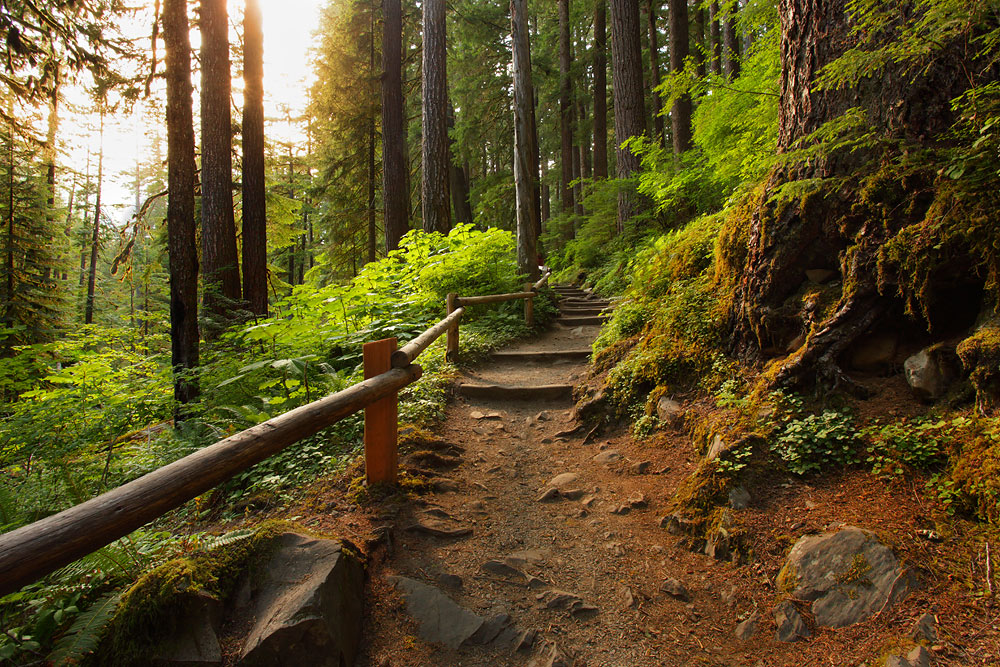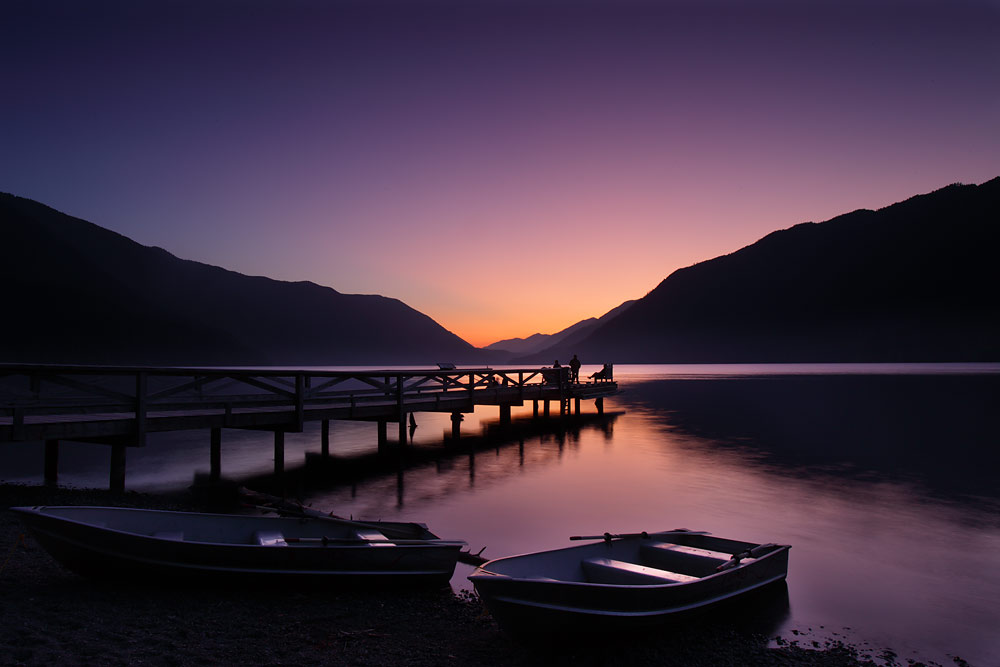|
|

Friday, August 12, 2011
Lake Crescent, Washington
We are out the door early to avoid construction traffic on 101 in Port Angeles, cruising east on the road as construction vehicles pass us going west. Fog smothers Port Angeles. The road into Olympic National Park passes the Visitors Center and winds its way through tall trees to sunshine after several miles. It is 55 with no wind. Only a few cars are parked facing the row of snow-capped peaks.. Reddish brown deer graze on the slope covered with wildflowers.

The trail to Hurricane Hill is a partly paved path that climbs high above the Park to views of Mt. Olympus, Mt. Baker, the Strait of Juan de Fuca and British Columbia. Steep emerald slopes are covered with wildflowers, forming a carpet of yellow, white, violet and pink. Lupine, Indian Paintbrush, phlox, glacier lilies and avalanche lilies. And of course, daisies. Marmots whistle loud warnings that strangers have arrived, while a horned lark scurries around in the brush.. One marmot lounges comfortably on a rock overlooking a cliff. Olympic Marmots, like Roosevelt Elk, are a separate species and seem larger and furrier than Yellowstone marmots. A deer reclines on the side of the mountain in a bare spot. At the top the view is magnificent. For 360 degrees we can see the Olympics, the Cascades, Port Angeles and the Strait and out to Canada.
The climb up is gradual, but up, and going down is a lot easier. A park employee holds a radio scanner in his hand, tracking mountain goats, and asks if we saw any. The Park has had trouble with mountain goats stalking visitors and becoming aggressive and is now trying to be proactive to prevent incidents. We didn't - unfortunately - and mountain goats should be easy to spot with their snow white coats. A little farther down the path we hear a bird call - a hawk? I look up at a bald eagle circling with an immature eagle. A hunting lesson perhaps? The marmots scurry back into their dens.
As we hike down, other visitors ask us what birds we saw. In Yellowstone we were always asked if we saw any bears.
We realize that because there is no chance of running into a grizzly, hiking is noticeably less stressful. When we reach the trailhead, a French couple asks
 if we saw any mountain goats and we have to disappoint them. They hiked up Hurricane Hill yesterday and don't want to do it again unless there's a mountain goat up there.
if we saw any mountain goats and we have to disappoint them. They hiked up Hurricane Hill yesterday and don't want to do it again unless there's a mountain goat up there.
The drive to Sol Duc Falls from 101 is about 17 miles through rain forest and passes Salmon Cascades. The trail begins at a grassy picnic area and travels through thick, dark forest. Hemlocks covered with moss tower above us. A winter wren, a smaller, dark brown version of the Carolina wren, hops through the brush. There are two sets of falls, the first tumbles over mossy rocks and under a wooden bridge while the second gushes streams of foaming white. At the east end of the bridge there is just a glimpse of a rainbow. Teenagers jump from rock to rock, unafraid of slipping.
Lake Crescent is quiet again tonight, water gently lapping against the shore. We walk through the rain forest surrounding the lodge, along the lake and up to Marymere Falls. A deer grazing in a clearing ignores us. A small dark squirrel spirals up a fir tree. The trail crosses under the road and crosses a series of bridges before reaching the falls. It's getting dark and we have no flashlight. A full round moon rises through the tall pines giving enough light to hike back to the lodge where two squirrels scamper in front of our door.
Our return trip follows the east side of the Olympic Peninsula and brings drizzle and cloudy skies. After Sequim, there are signs for "Elk Crossing" along the road, a reminder that this is still Olympic National Park. Highway 101 clings to Puget Sound and the Hood Canal on one side and passes lavender farms and wineries on the other. There is just too much to explore in one week.
Author - Christine Baleshta
Photography - Tim Springer
 |
Click for larger image
|
|

